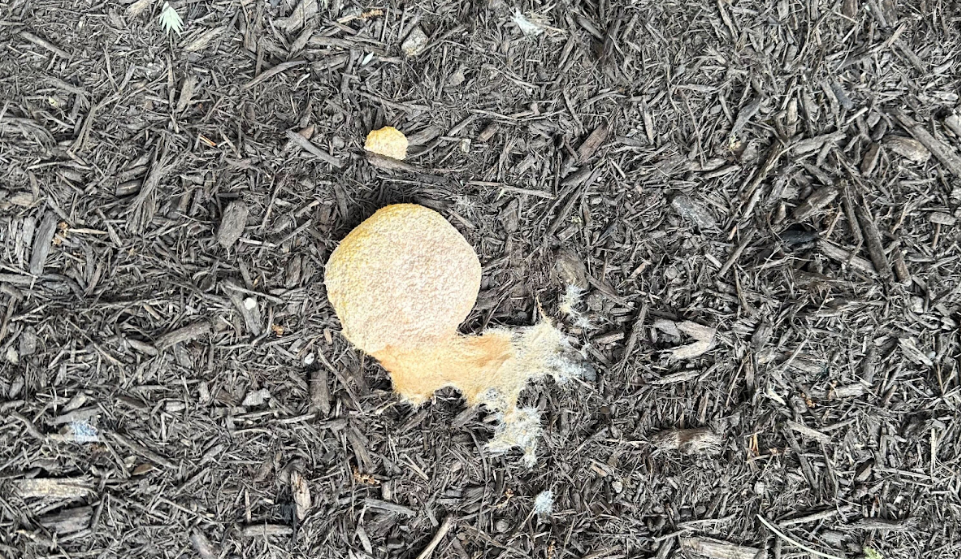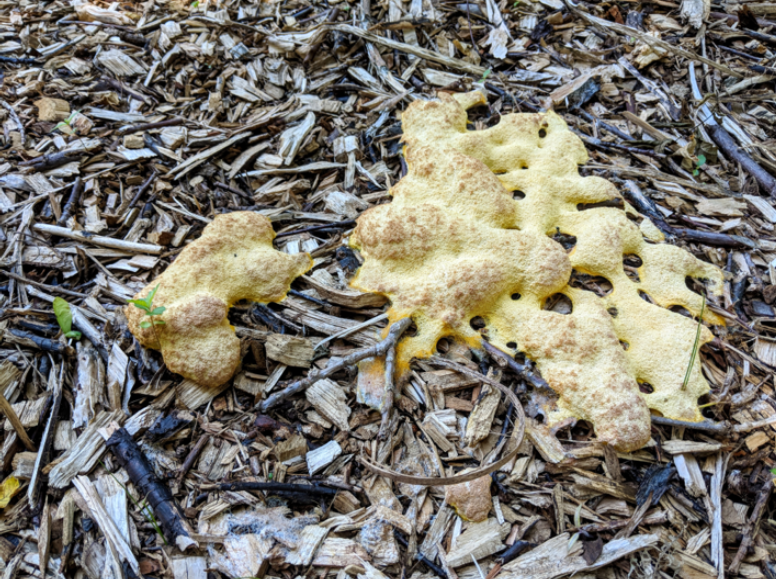If you’ve ever walked out to your yard after a rainstorm and noticed a strange, bright yellow blob on your mulch that looks suspiciously like scrambled eggs, you’re not alone. What you’re seeing is most likely slime mold, a common and surprisingly harmless organism that thrives in moist, organic mulch. At Urban Oasis Contracting, we frequently get questions from clients who worry this bright intruder is harming their garden—but the truth is far more benign.
What Is Slime Mold?
Slime mold is not a true fungus, though it’s often lumped in with other mulch fungi. It’s a soil-dwelling organism that feeds on bacteria and decaying organic matter. It shows up most often in mulched garden beds after heavy rains or during periods of high humidity. The most common variety is a yellowish-orange blob, though colors can vary from white to gray to black as it matures.
Slime mold may appear as:
- A foamy or crusty mass
- A spongy, jelly-like form
- A dusty powder once it dries out
Despite its alien appearance, slime mold is completely harmless to plants, pets, and people.
Why Is Slime Mold Growing in My Mulch?
Slime mold loves environments that are:
- Moist and shaded
- Full of organic material, like wood mulch
- Warm and humid, especially in spring and early summer
Once conditions are right, spores bloom and the organism creeps along surfaces looking for food. Though dramatic in appearance, it does not feed on live plants or roots.

Is Slime Mold Dangerous?
No! Slime mold:
- Does not damage your grass, flowers, or shrubs
- Does not produce toxins
- Is not harmful to dogs or other pets
While it might look like a horror movie prop, it’s actually part of your landscape’s natural ecological process.
How to Manage Slime Mold
Although you don’t have to remove slime mold, some homeowners prefer to get rid of it for aesthetic reasons. Here’s how:
1. Manual Removal
Use a shovel or rake to scoop off the slime mold. Dispose of it in the trash—not your compost pile.
2. Improve Drainage
Slimy growth thrives in soggy mulch. Make sure water can drain freely from your beds by:
- Aerating the soil
- Avoiding overwatering
- Switching to coarser mulch
3. Rake and Turn Mulch
Rake your mulch periodically to allow airflow and disrupt potential mold buildup.
4. Avoid Chemicals
Slime mold doesn’t require fungicides or bleach. Chemical treatments are ineffective and may harm your garden more than help.
Final Thoughts
Slime mold on mulch might be startling, but it’s a harmless natural phenomenon that’s actually a sign your garden is rich in organic life. At Urban Oasis Contracting, we encourage you to enjoy your garden—even the weird parts! If you’re concerned about any garden fungi or mulch issues, our team is happy to assess and recommend solutions that suit your landscape needs.





